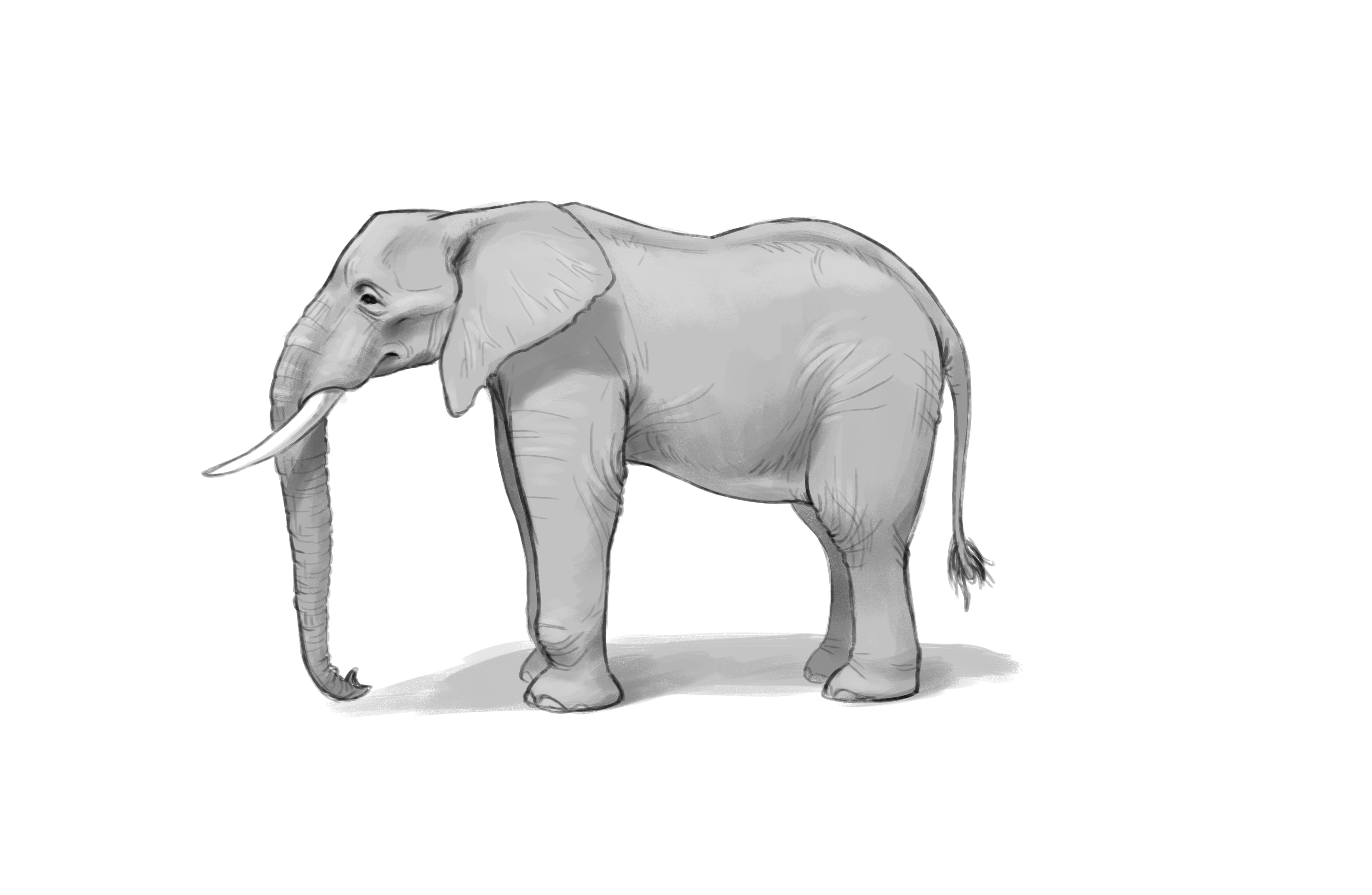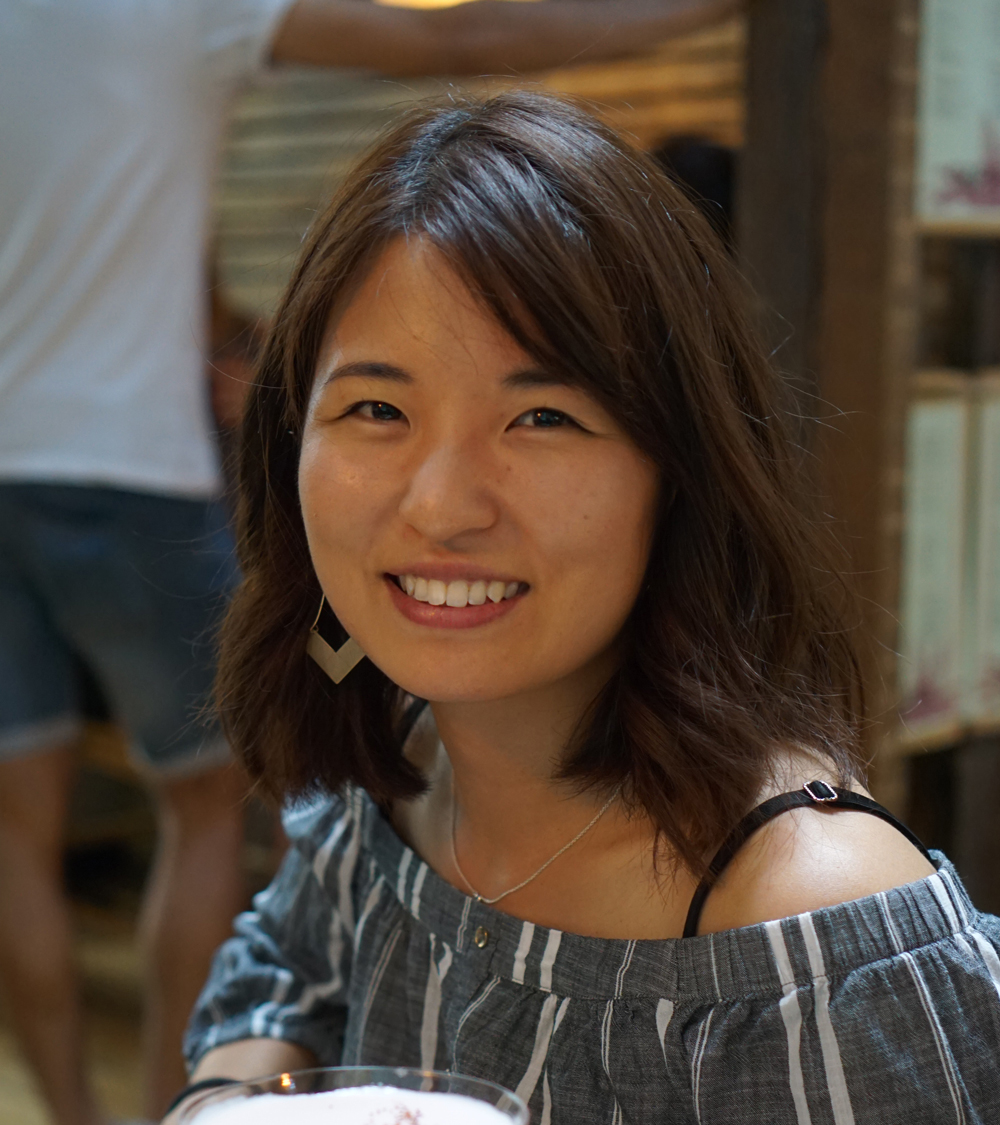How to draw an elephant
This easy-to-follow video tutorial will teach you how to draw an anatomically correct elephant.
As the largest living land mammal on earth, elephants have quite the undeniable presence. At birth, elephants already weigh up to 200 pounds (roughly 90 kg), and in the case of a mature African Elephant, they carry the huge body mass of around 12,000 pounds (or 5,443 kg) everywhere they go, which explains why they have such bulky, sturdy structures and wide column-like legs.
Elephants seem like an animal that would be fairly easy to draw just by constructing several big shapes together, but in order to realistically illustrate an African elephant, it's worth understanding their fascinating features, like the trunk, feet, and bone structure. By doing so, you'll start to notice subtle details that can be applied to capture a realistic drawing of an elephant.
In this step-by-step tutorial, I'll be showing you how I approach a drawing of an African elephant's profile view. I'll demonstrate how to block in simple shapes and cover very basic anatomy structure to understand what lies under the skin. Then we'll carve out the mass and form of the body before diving into the details of the skin. The elephant's wrinkles and crevices are also important features we can't forget.
Before you start the tutorial, don't forget to pull up your own reference as you follow along. And if you enjoy learning how to draw an elephant, make sure to check out our other brilliant how to draw tutorials.
01. Draw the torso

Draw a big circle and divide it in half. Take half the width of the circle to measure out the torso to the left. Form a bean like shape and make sure the belly side slopes down to the right.
02. Attach the legs

Take the middle of the torso and duplicate the height of the bean to measure the distance to the ground. Divide the torso into three parts; the shoulder, stomach and hip. Block in long rectangular legs tapering in towards the bulging foot like a tall glass shape. The back legs will look more like an hour glass with the middle taped in.
03. Connect the neck and trunk

Draw a rhomboid shape for the head that's as wide as the shoulder width. Divide it into quarters and draw the trunk starting from the middle of the head. The trunk comes out touching the tip of the head and droops down to the ground.
Get the Creative Bloq Newsletter
Daily design news, reviews, how-tos and more, as picked by the editors.
04. Attach the trunk, eye, ear and tail

Fill in a circle for the eye a little lower and left off the centre of the head. Right below the eye, follow the centre guideline to draw the long curved tusk. The skin will overlap right at the bottom of the head shape. The ear will look like big butterfly wing-shapes that covers the entire neck and droops down past the chin, and tucks right up to the centre of the head. The tail will hang down past halfway to the ground.
05. Skeletal structure: Torso

The spine runs flat along the back to support all their weight and bears the massive ribcage that takes up majority of the torso. The scapula wraps around the rib cage and comes up as high as the spine.
06. Skeletal structure: Front legs

The shoulders attach at the bottom of the scapula and anchors to the elbow joints. From there the bone drops straight down to the big wrist. Look at an elephant's foot, they only walk on the tip of their toes. The round disc like feet are in fact stuffed with very thick padding behind the toes. The wide surface area helps to balance and support their weight.
07. Skeletal structure: Hind legs

The hip bone attaches to the back of the spine and sits very close to the ribcage. The legs connect from the bottom of the hip and come down to the knee joint, right where the torso attaches to the legs. The back feet are a very similar shape to the front feet, only the back will have a heel sticking out.
08. Skull structure

African Elephant's signature tusks are equivalent to our front incisor teeth and their nasal structure is located right above the eyes. The cheek bones protrudes out so much, the dip in the side of the head becomes very visible and gives them the sunken cheek look as the skin wraps around the jaw.
09. Build the form of the trunk

Start with a flat head with a strong break for the forehead. Right over the nasal cavity, draw a subtle bump as it reaches the eye. The nose should then bump out again with a stronger arch. The nose will be a tube-like shape that tapers in as it get close to the tip. The trunk wraps around the tusk where the skin folds overlap.
10. Shape the mouth and ear

The corner of the mouth forms right where the tusk ends, and the bottom lips tucks under. The cheek bones have a strong plane change which makes the side of their jaw and head look sunken in. The base of the ear should feel like there's volume to it, whereas the rest should look like a thin sheet.
11. Expand the body's form

Expand the middle torso as a big bulbous belly. Make the legs look like big columns, but show the bulgy joints. For the elephant to have mobility in its legs, there needs to be enough loose skin between the torso and the legs. Draw the tail, and the legs covered in the back.
12. Locate the wrinkles

Just like your finger joints or elbows, you will see the elephant's skin is similarly wrinkled and bunched up at the joints. The trunk is like an accordion where it has the freedom to move, bend and curl. It has rings of deep crevasses that fold into each other, and kind of resembles a slinky.
13. Detail the wrinkles and form

When you draw the wrinkles, remember to add a variety of length and thicknesses. Try to vary up the distance from each other, depending on how tight the wrinkles fold into each other.
14. Incorporate the other features

Draw the hair coming out from the end of the tail from two sides, and make sure to draw the ears as big thin sheets with veins running along them. The fingernails shaped like a crescent will sit flat against the feet.
15. Fill the light and shadows

If you want to push the drawing a bit further, emphasise the elephant's shapes by filling in the light and shadow. Areas that sticks out like the spine and cheek bone will catch more light, while other areas such as the jaw and belly will hide in the shadow.
Read more:

Thank you for reading 5 articles this month* Join now for unlimited access
Enjoy your first month for just £1 / $1 / €1
*Read 5 free articles per month without a subscription

Join now for unlimited access
Try first month for just £1 / $1 / €1

